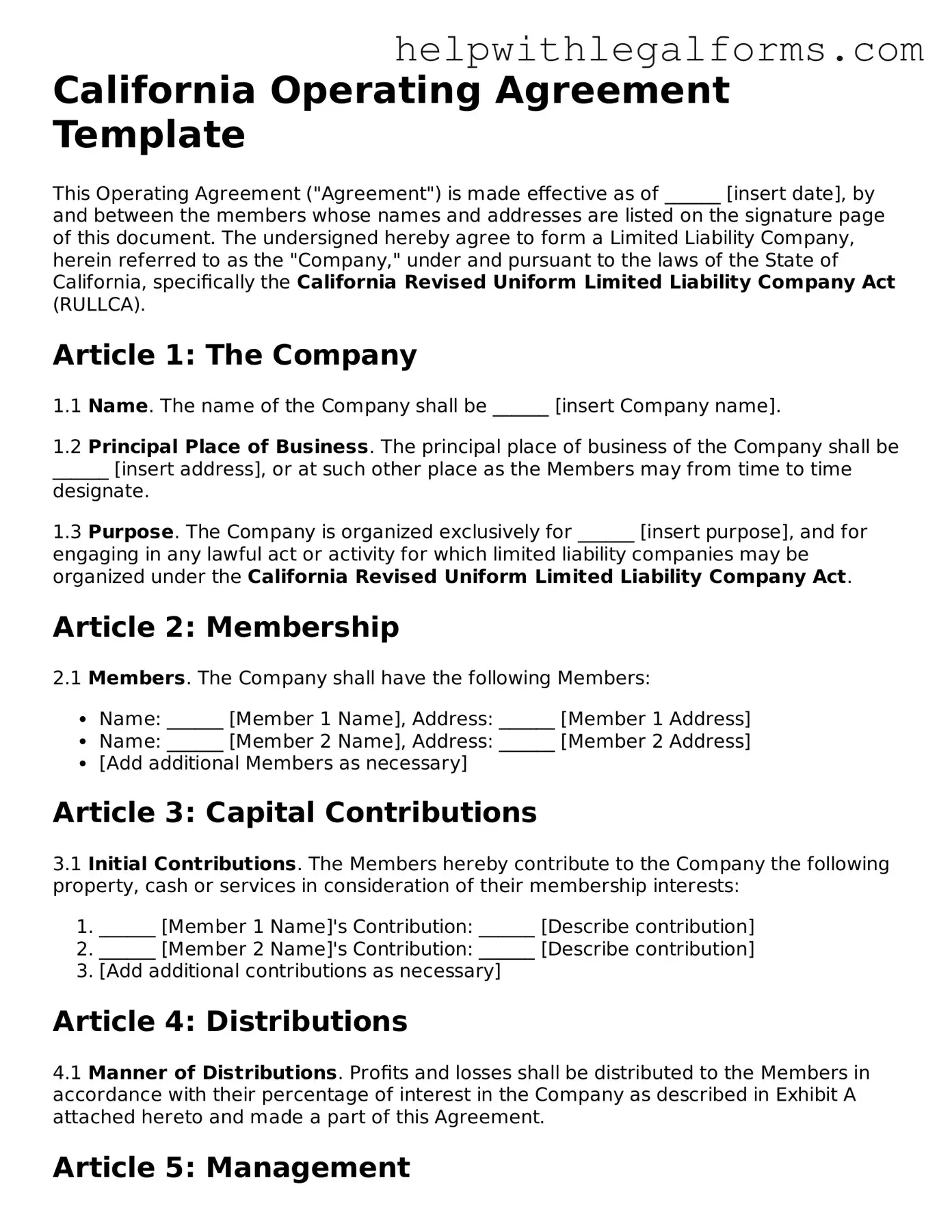What is an Operating Agreement?
An Operating Agreement is a legal document that outlines the ownership and member duties of a Limited Liability Company (LLC). This agreement is important because it provides a clear framework for the operations of the LLC, helping to ensure that all members are on the same page and reducing potential conflicts. While not required by every state, having an Operating Agreement is considered best practice for LLCs.
Do California LLCs have to have an Operating Agreement?
Yes, in California, while the law doesn't require LLCs to file their Operating Agreements with the state, it does require that an Operating Agreement is created and maintained. This requirement helps to ensure that there is a clear record of the structure and policies of the LLC that can be referred to if disputes arise.
Can an Operating Agreement be modified?
Yes, an Operating Agreement can be modified if the conditions for modifications set forth in the agreement itself are met. Usually, this requires a certain percentage of member votes. It's important for LLCs to regularly review and update their Operating Agreement to reflect the current operation and agreement between LLC members.
What should be included in a California Operating Agreement?
An Operating Agreement in California should include details such as the LLC's name and address, the term of the LLC, the names of the members, how the LLC will be managed, the capital contributions of each member, how profits and losses will be distributed, rules for meetings and votes, and provisions for adding or removing members. It may also outline procedures for dissolution of the LLC.
Is an Operating Agreement required for a single-member LLC in California?
Yes, even if an LLC has only one member, California law still requires the LLC to have an Operating Agreement. While it may seem unnecessary for a single-member LLC, the Operating Agreement can provide important documentation for the LLC's operational structure and for financial and legal institutions that require it.
Where should the Operating Agreement be kept?
The Operating Agreement should be kept in a safe and accessible place. It's not required to be filed with the state, but it should be readily available for all LLC members to review. It's also wise to keep a copy with any documents related to the LLC, such as its formation paperwork and tax documents.
Are there any penalties for not having an Operating Agreement in California?
While California does not impose specific penalties for not having an Operating Agreement, not having one can lead to complications. It can lead to conflicts among members without a written agreement to resolve disputes. Additionally, without an Operating Agreement, the LLC may be treated under default state laws, which might not be favorable for the LLC members.
How does an Operating Agreement protect the members of an LLC?
An Operating Agreement protects LLC members by outlining the ownership structure, operational procedures, and financial arrangements. This can prevent disputes by setting clear expectations for how decisions are made and profits are shared. Furthermore, it helps to ensure that personal assets are protected from business liabilities by reinforcing the separation between members and the business.
Can I write my own Operating Agreement for my California LLC?
Yes, you can write your own Operating Agreement for your California LLC. However, it is highly recommended to consult with a legal advisor to ensure that the agreement meets all legal requirements and adequately covers all aspects of the LLC's operations. This can help prevent legal issues and ensure that the agreement is enforceable.
